Guided Math in Grades 3-5
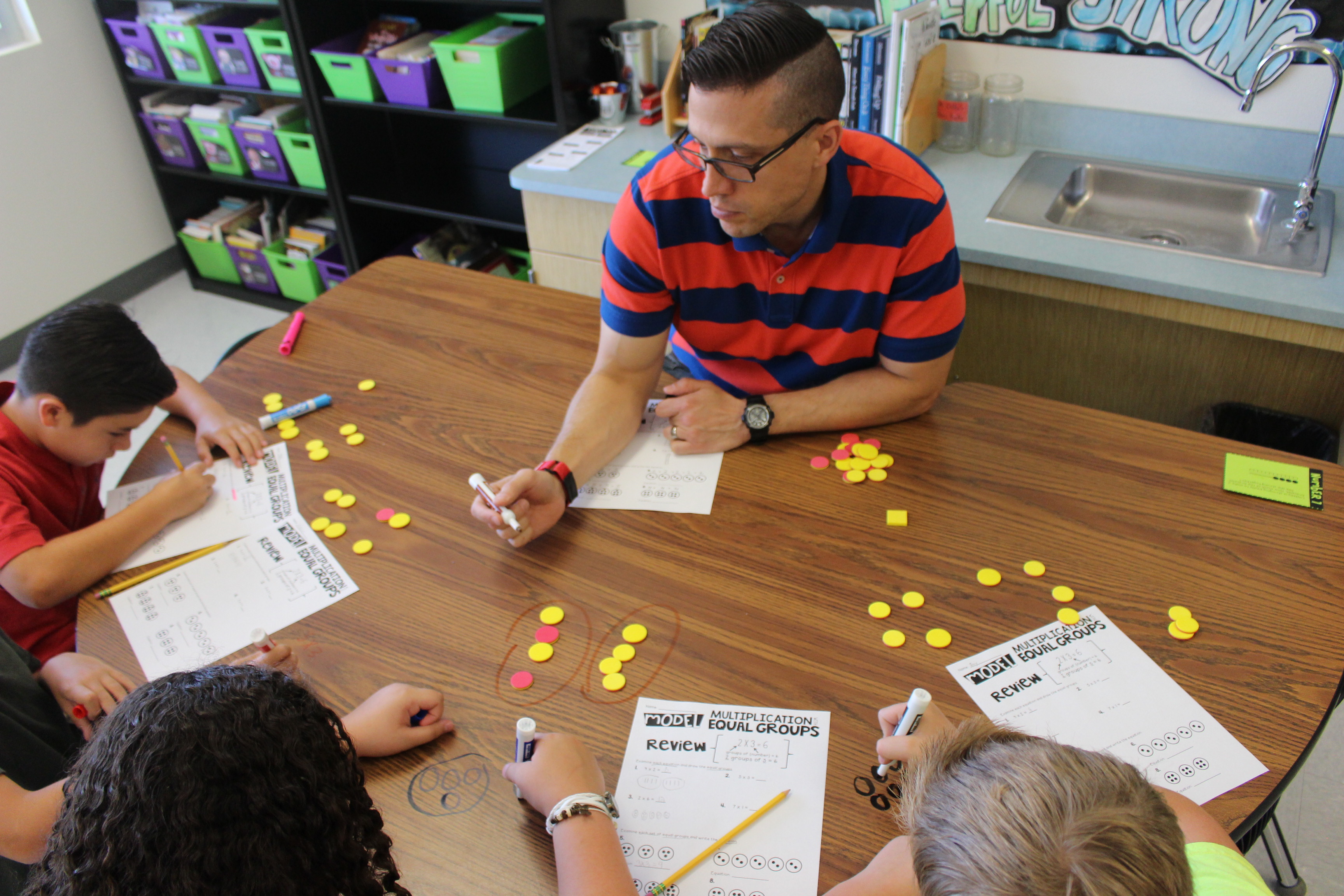
Many of the posts I have shared highlight a primary view of the guided math structure, but I want to talk about how guided math works in grades 3-5. This age range has many advantages to the younger ones, yet boasts of its own unique set of challenges as well. Students are more independent when it comes to working without a teacher, reading directions, and general work habits than the primary student. However, you typically have a larger class size, behavior challenges, and the content of the lessons is more difficult and rigorous, especially for students who struggle. This is where we will focus our efforts!
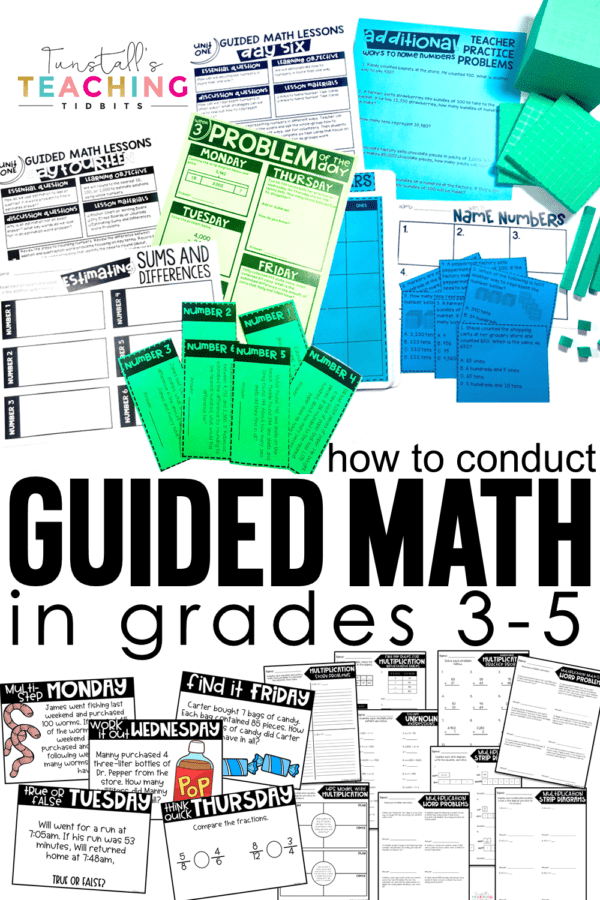
If you need resources for the Guided Math Classroom, they will all be at the bottom of this post.
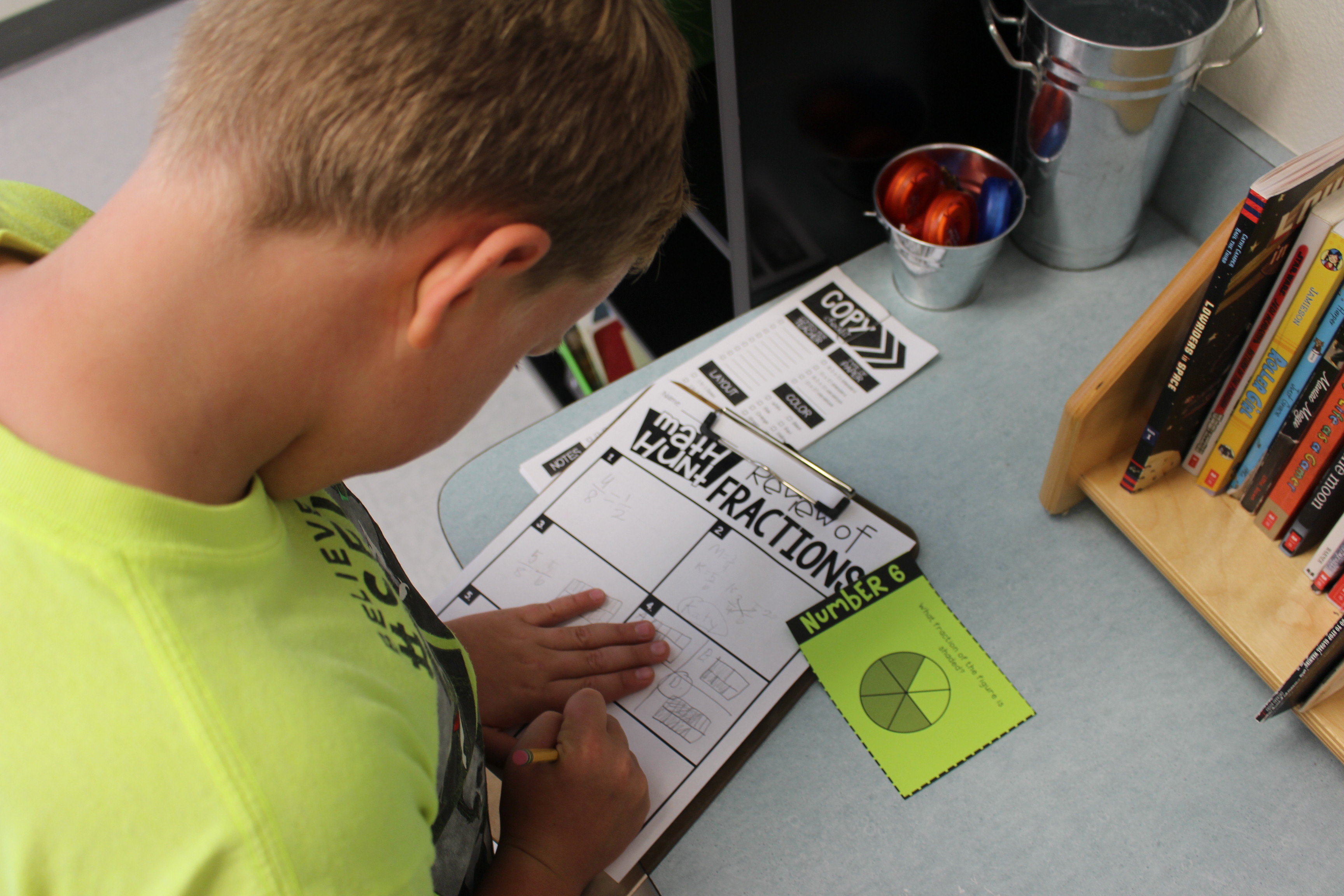
Creating the Math Block Structure
Lesson Warm-Up
In the guided math structure, we want to kick off the learning with a math warm-up which is going to be a problem or skill that is posted for review. Below are examples of a week of digital math warm-ups. I love a good alliteration and so do my students!
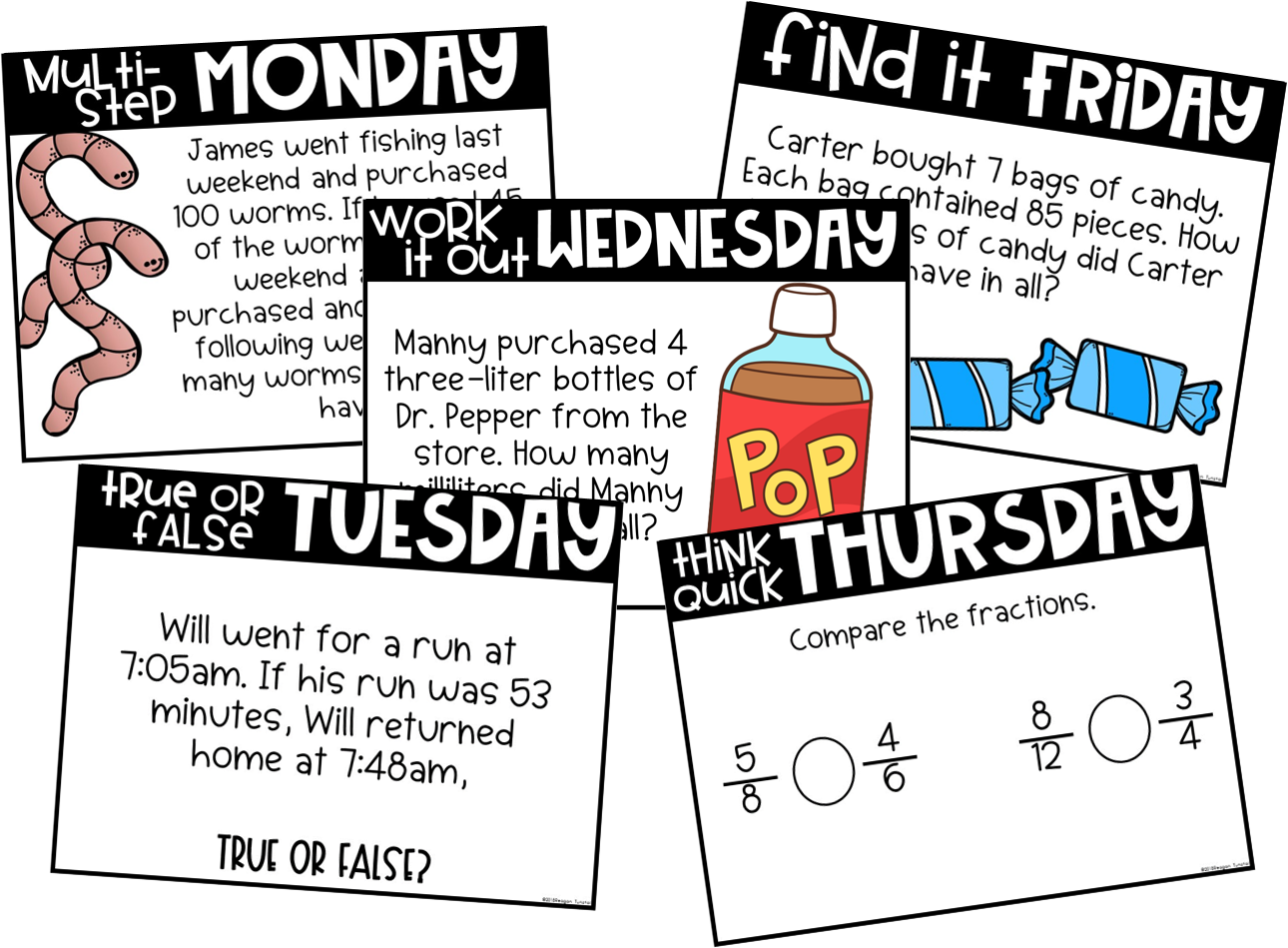
Next, we teach the math mini-lesson. This is an introduction to the new skill/new instruction. In the Guided Math workshop, I offer, we take a deep dive into the focus of this mini-lesson, but generally speaking, we want to introduce the new skill in the conceptual format. How does this relate to what I already know and have a solid understanding of? How can I understand what is happening with the numbers and concepts before it is just step-by-step algorithms to complete?

Math Mini-Lesson
Generally speaking, this range of grade levels loves the whole group part of teaching math. Here’s the type of problem we are learning today. Here’s how you work through it. Now it’s your turn…I am simplifying a tad here, but the goal in guided math is to spend a lot less time in the whole group where students are not able to truly explore math authentically. We introduce the new skill, build the foundation of understanding, and then release students to our workstation routine so we can then bring students to us in small groups to teach and explore the content as they work through the new skills in front of us.
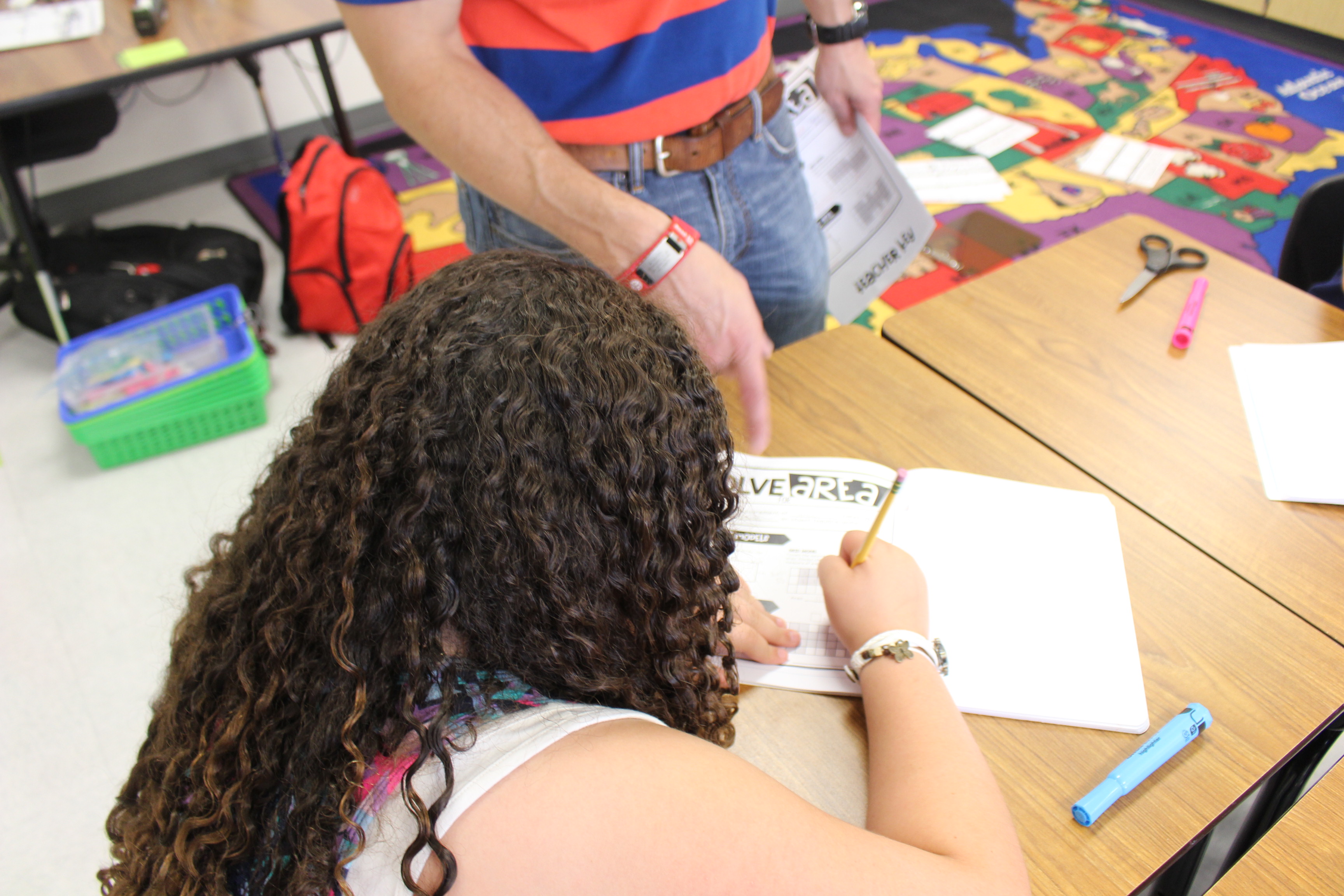
This is where we truly see that big leap of learning and understanding. If students are struggling with a step in problem-solving, we will be able to catch it and support them. They can work through the skill and steps with us and gain confidence and understanding. If you think about it, in a non-guided math classroom, the teacher shares out knowledge and examples but the students don’t truly apply the new skill until hours later at home for homework. This creates a gap that many students can not navigate without stress and frustration about math. In the guided math classroom, students get their hands dirty and have support so they become confident in the new skills.
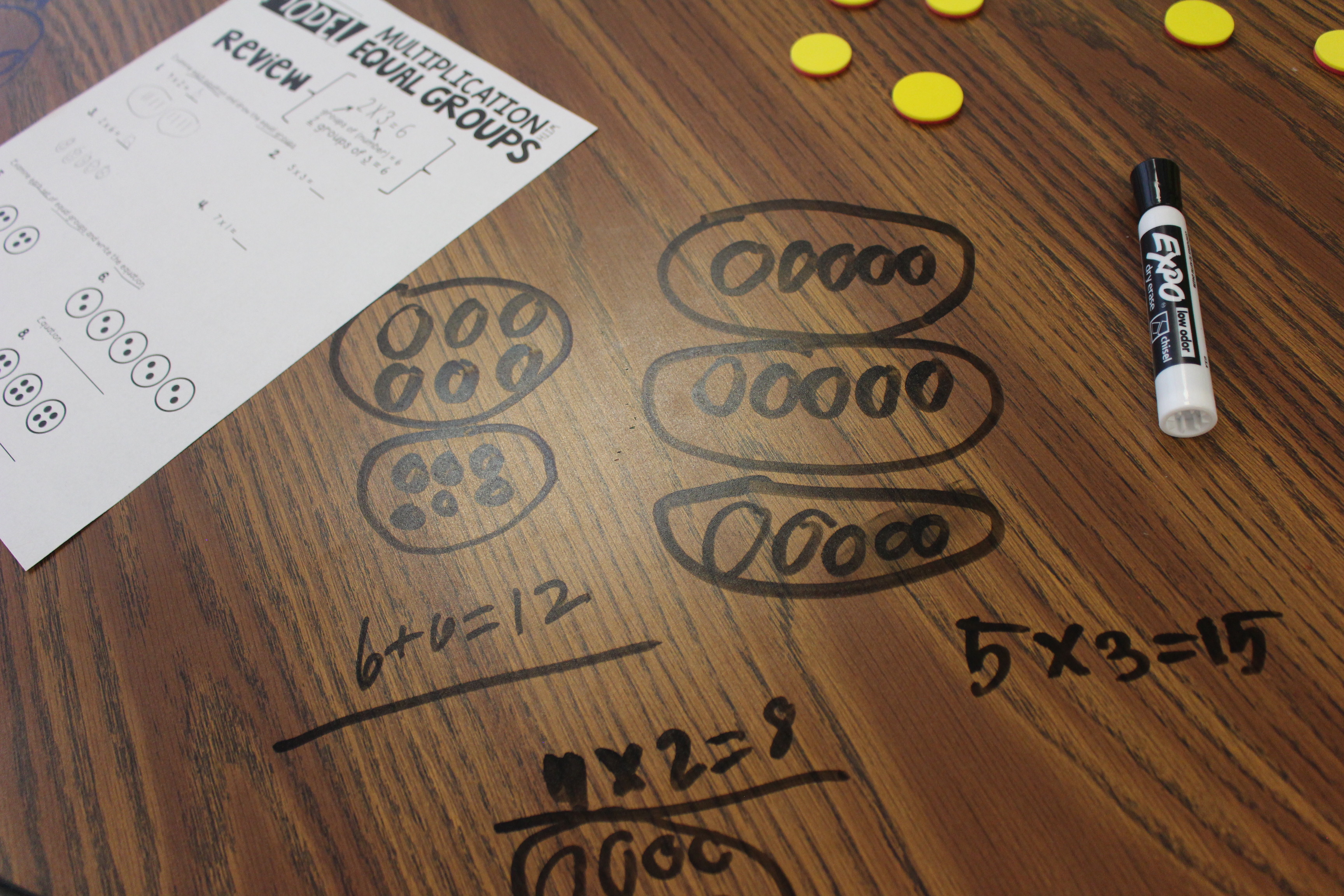
Structuring Workstations with Student Behavior in Mind
We can simplify the management of math rotations with 2 little things: The first is consistency. If you observe any teacher in the school, chances are if math rotations are going well, students have a consistent routine.
Choosing a rotation management system and sticking to it is key. Remember, it may take a couple of days weeks to get comfortable. When I introduce rotations with teachers during workshops, the first few seconds of each rotation are a little confusing and there are questions. This is normal. After we have a couple of rotations under our belts, we are transitioning like a confident Beyonce with the wind blowing our hair. Once your routine is established, the content becomes the focus.
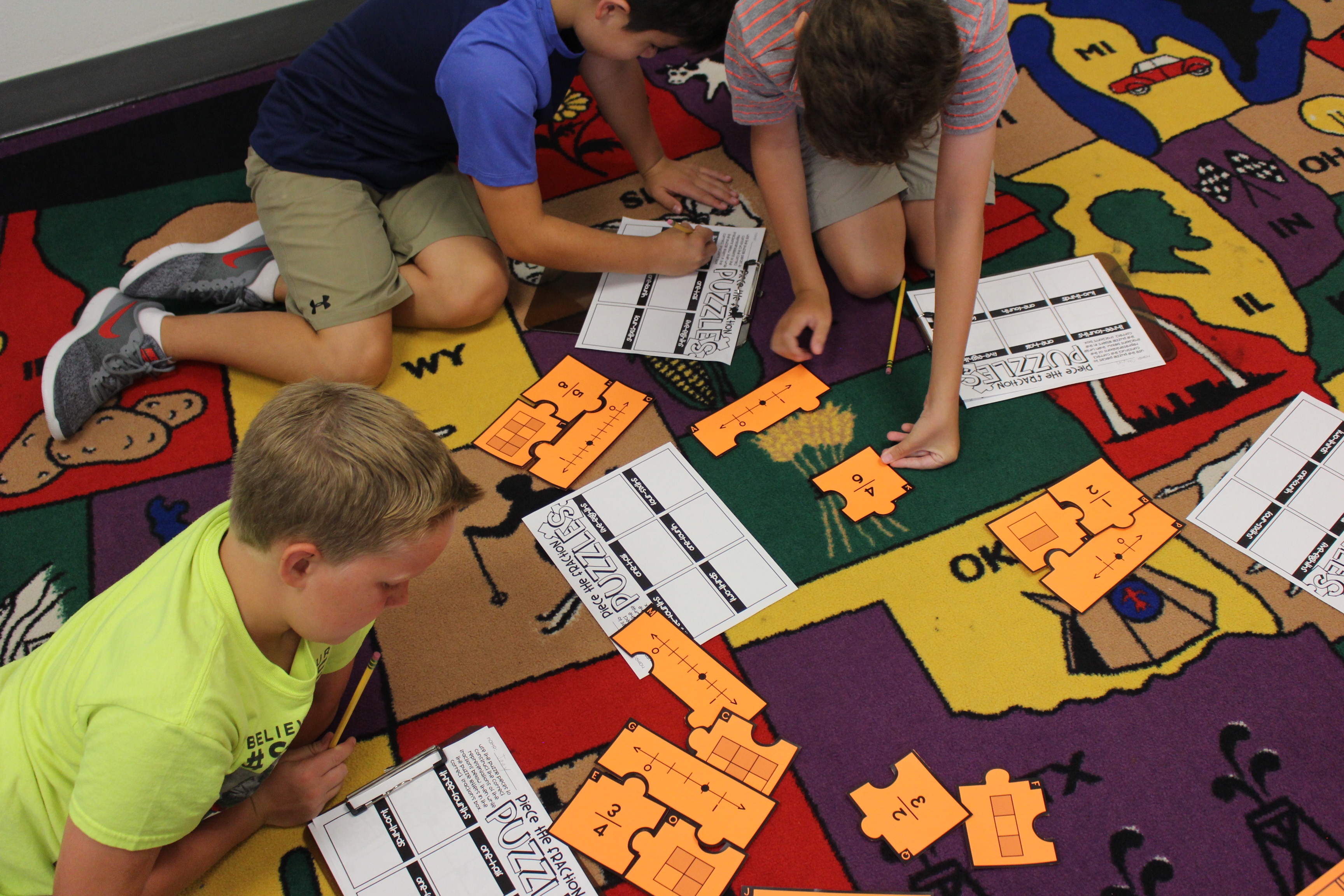
Adjusting the time increment of your rotations, the number of rounds, and which choices students have, create the backbone of your system. I was determined to make this easy, so I created an editable management system for math rotations! Simply drag and drop your choices into the group circles, choose your time increment, and the number of rounds. Then click play. Students who struggle with transitions, those who need a visual cue, or those who have time management difficulty, can all benefit from this system. Personally, all three describe me, the teacher, some days! I need it as much as the students do.
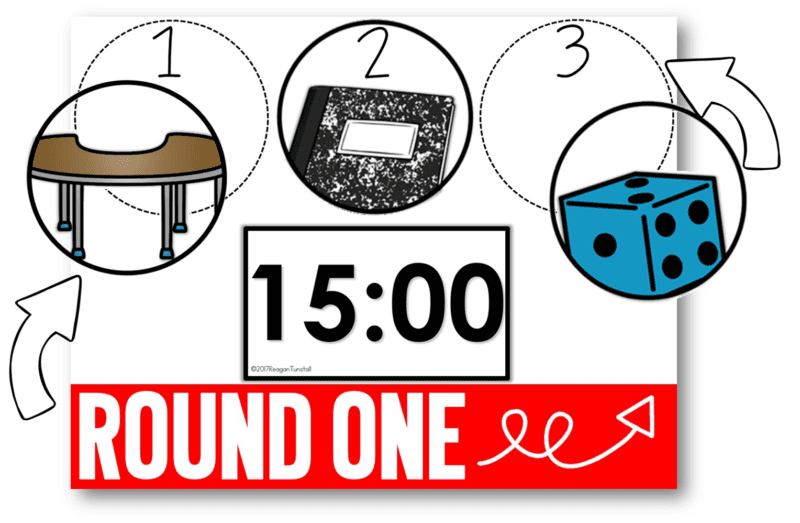
If you need resources for the Guided Math Classroom, they will all be at the bottom of this post.
Workstation Choices
Meeting two to three groups per day is where we fall in this grade level range. Taking 15 to 20 minutes per group is a rough estimate of the time that would work well for this range of students and their content. If your structure looks different but it works well, then stay with it. Don’t fix what isn’t broken!
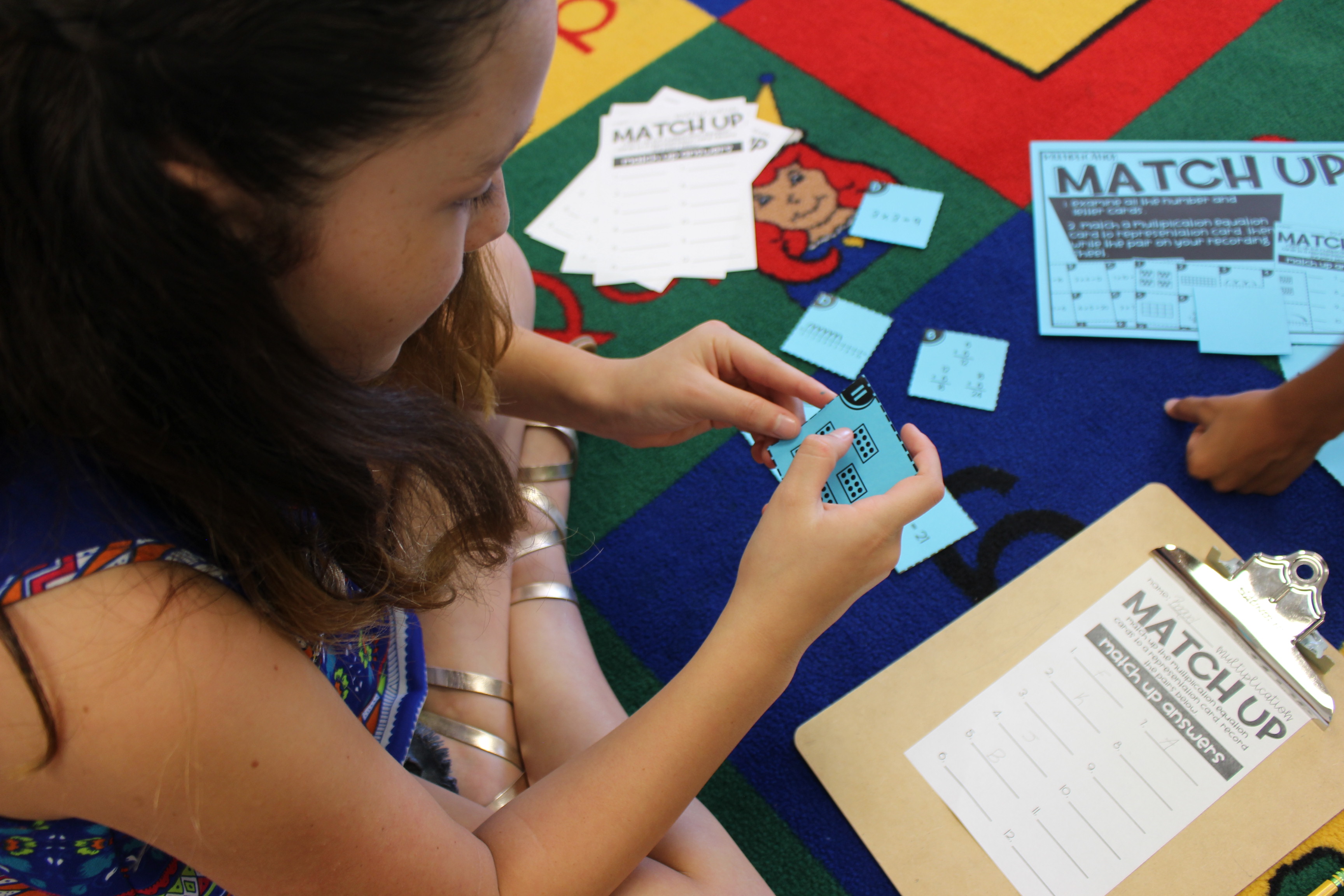
MATH STACK
As I was getting my feet wet with the idea of workstations, I was guilty of having groups all over the room simultaneously in math games. Once I became more confident in my instruction, it was time to designate different types of activities for these groups to do. This was going to help reduce the amount of noise and chaos going on in our room. I came up with 5 activities for my students to do. I came up with an ACRONYM for these choices because that’s what teachers do. The acronym STACK was a way for me to vary the types of resources I was using. This brought the noise and chaos to a minimum and allowed me to help develop more well-rounded math experiences for my students.
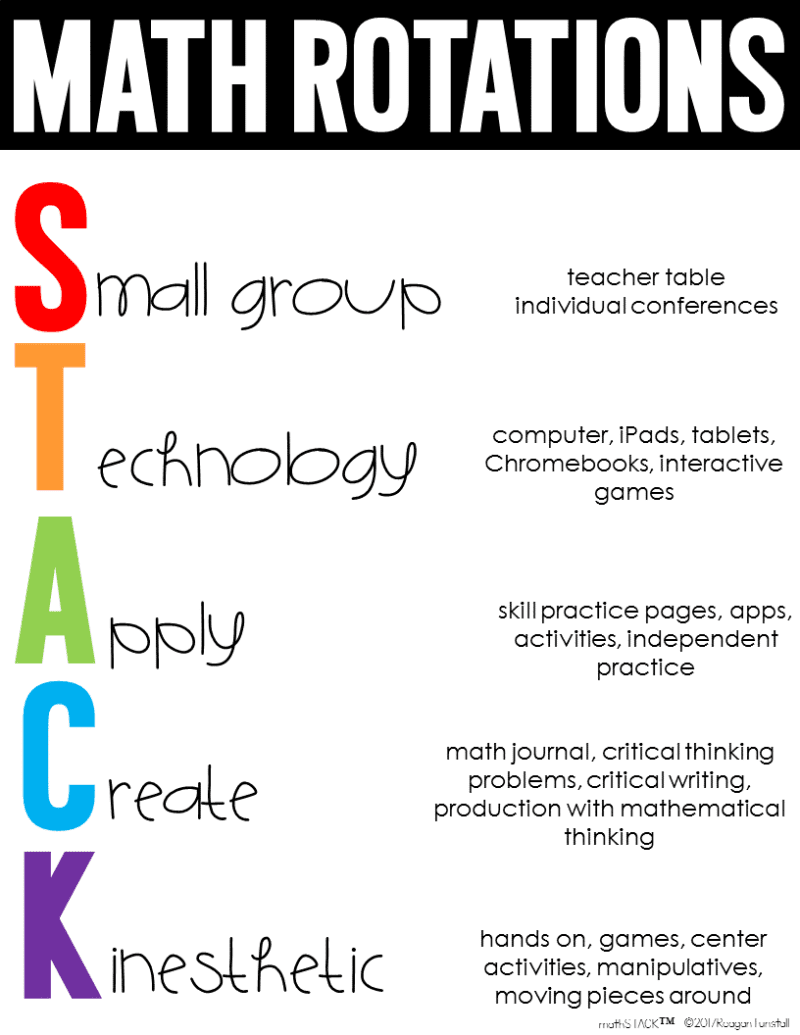
Whether you need 2, 3, 4, or 5 rotations, you can reduce the amount of noise and chaos by choosing activities from different modalities of learning. Here’s a visual example of the different choices I may choose for a math block. I have ranged from completing two stations per day to all five in a day. So much of that depends on grade level, length of math block, class size, and so on. The important thing to remember is that you want to see every student in a systematic routine. High students may not need you for as many minutes as struggling students, but they do still need that time to work and discuss with the teacher in close proximity.
If you need resources for the Guided Math Classroom, they will all be at the bottom of this post.
Students Working Independently
The purpose of workstations is having students actively learning during the entire math block. Rather than being in a passive role, students actively engage in collaborative learning opportunities. We want to build a well-rounded math experience. Workstations should not be new information or skills. They should be a spiral-review of previously taught concepts.
 The reason for this is to be sure students have had time to understand the learning before putting it out for them to do independently. Workstations allow students to practice and apply math skills in many formats. Not only does this strengthen their understanding, but it builds fluency and automaticity in math skills. When students have the opportunity to practice and apply concepts through the year and not just when they are first being taught, they gain confidence and comfortability. This is the goal of workstations. Put out a variety of skills and concepts that provide a spiraled review.
The reason for this is to be sure students have had time to understand the learning before putting it out for them to do independently. Workstations allow students to practice and apply math skills in many formats. Not only does this strengthen their understanding, but it builds fluency and automaticity in math skills. When students have the opportunity to practice and apply concepts through the year and not just when they are first being taught, they gain confidence and comfortability. This is the goal of workstations. Put out a variety of skills and concepts that provide a spiraled review.

Wrapping up the Learning
We end the day in a short whole group reflection time. This is where we encourage students to share one thing about the learning that happened today. The purpose of this is to elicit students to think about how they are doing both in new concepts as well as in collaborative learning groups. Was there an area we can improve? Discussions can be both academic as well as about social interactions and experiences. Beyond a discussion, a review problem of the day is another effective way to take a quick check on how students are doing on the concept of the day. 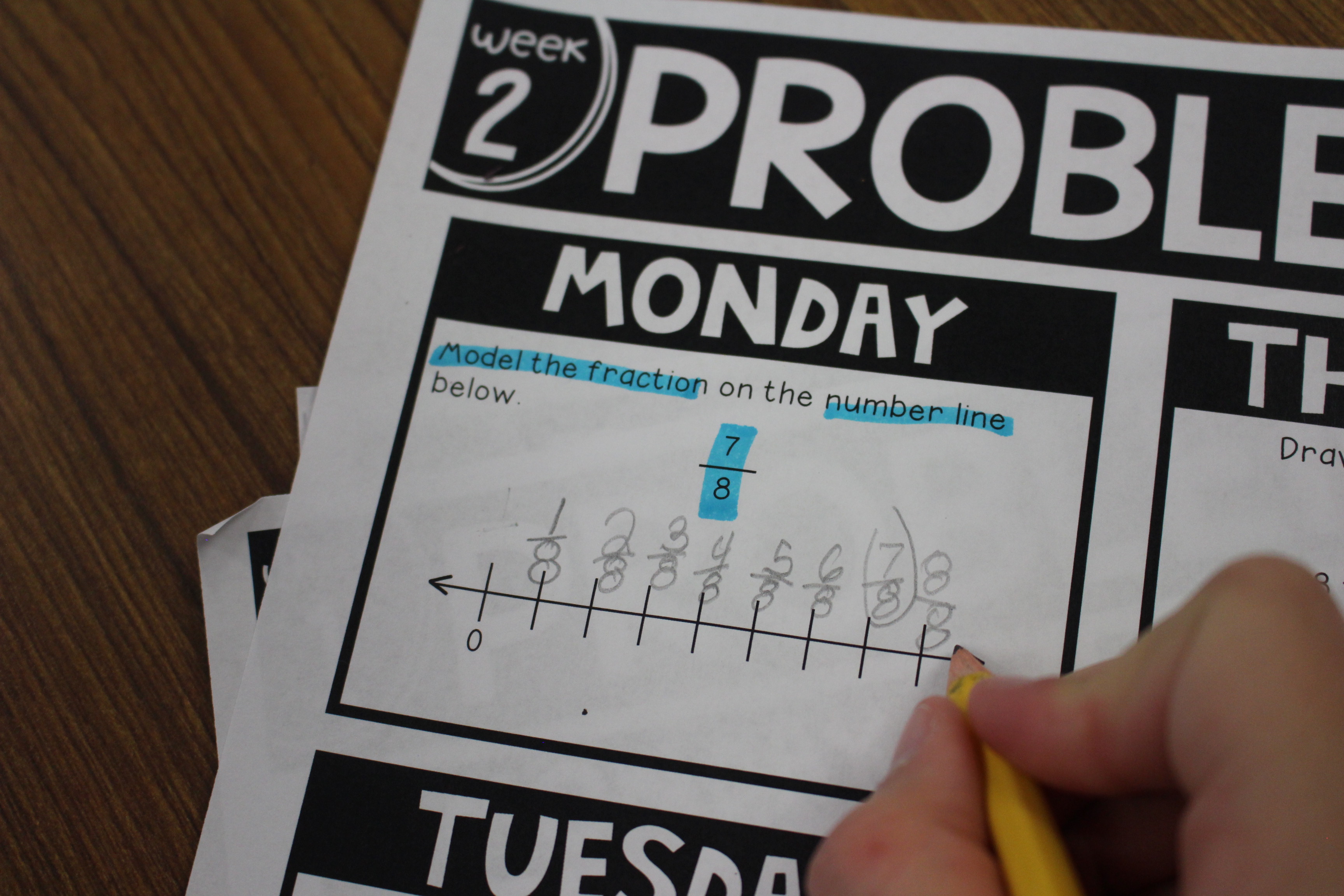
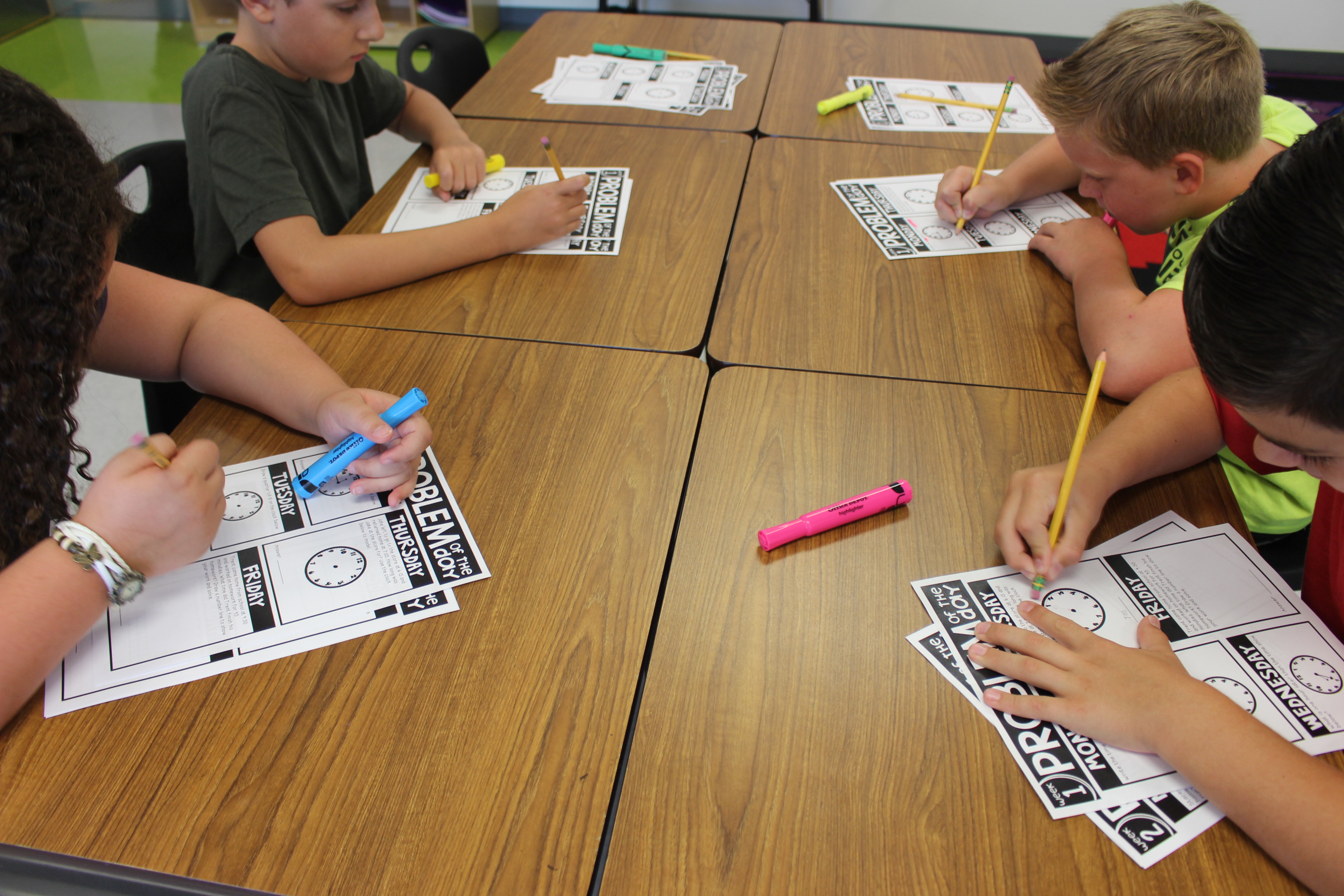
Guided Math Resources for Grades 3-5
Below you will find resources for each part of the guided math block! Simply click the grade level number link under the heading of the resource you are interested in and you’ll be directed to the resource. Don’t worry, you won’t lose your place, a new window will open!
Guided Math Timer Management System
Digital Math Warm-Ups
3rd Grade, 4th Grade, (5th Grade coming soon)
Guided Math Lessons for math mini-lesson and small group (standards-aligned)
3rd Grade, 4th Grade, 5th Grade
Math Centers
Skill Pages
Math Journals
Exit Tickets
Related Posts for Guided Math
If you want to read more on guided math, I have a math tab on the main page of my blog, or you can click the picture below to head to another post. Leave a comment and let me know how you are doing with guided math!
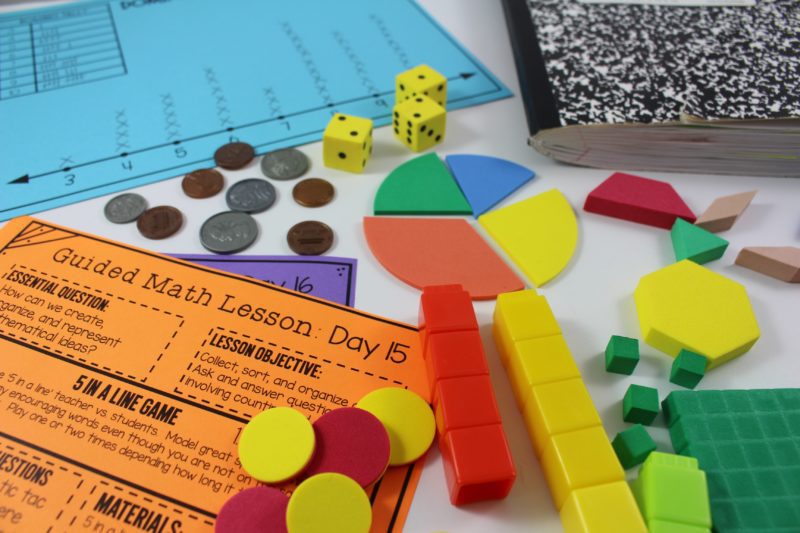

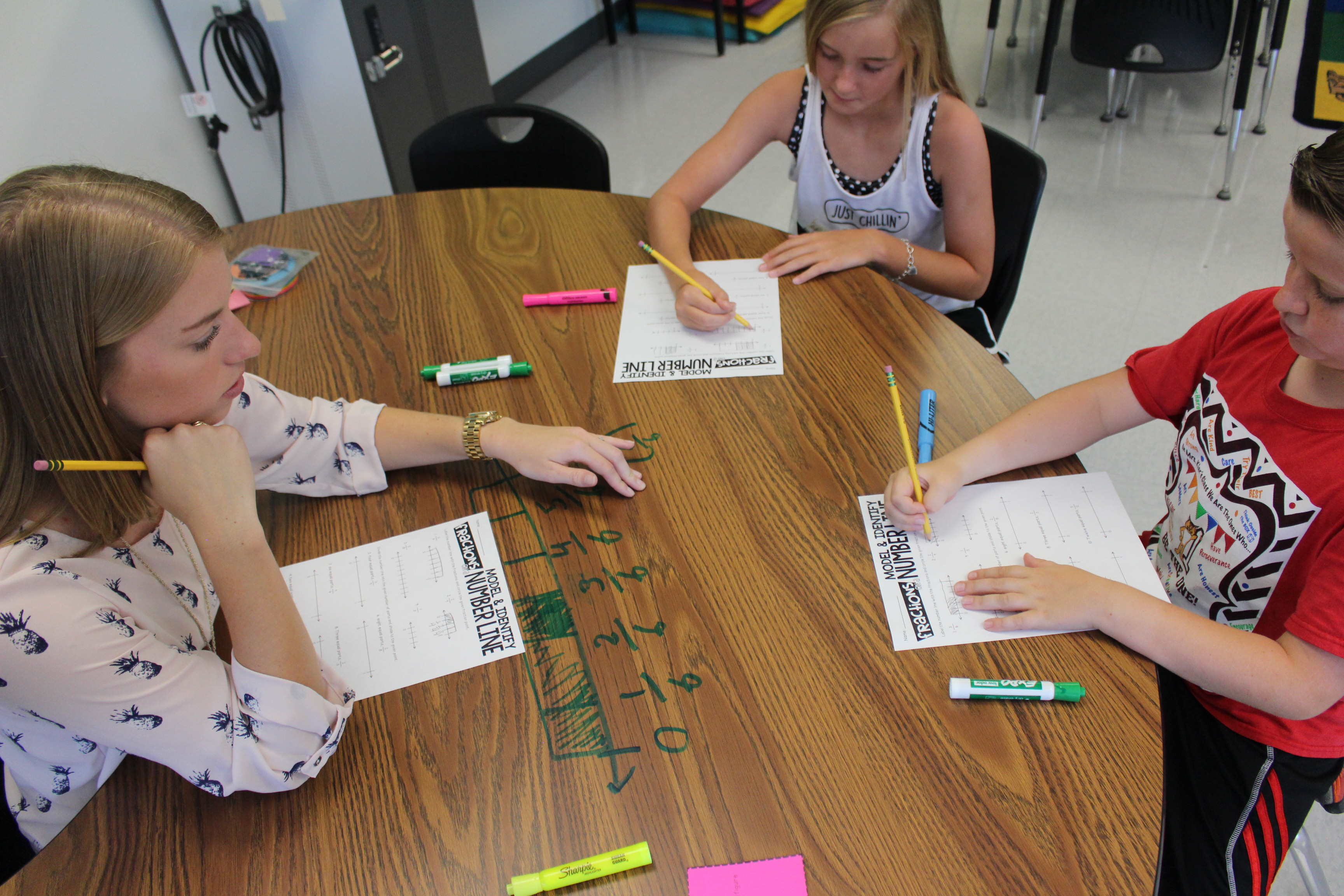

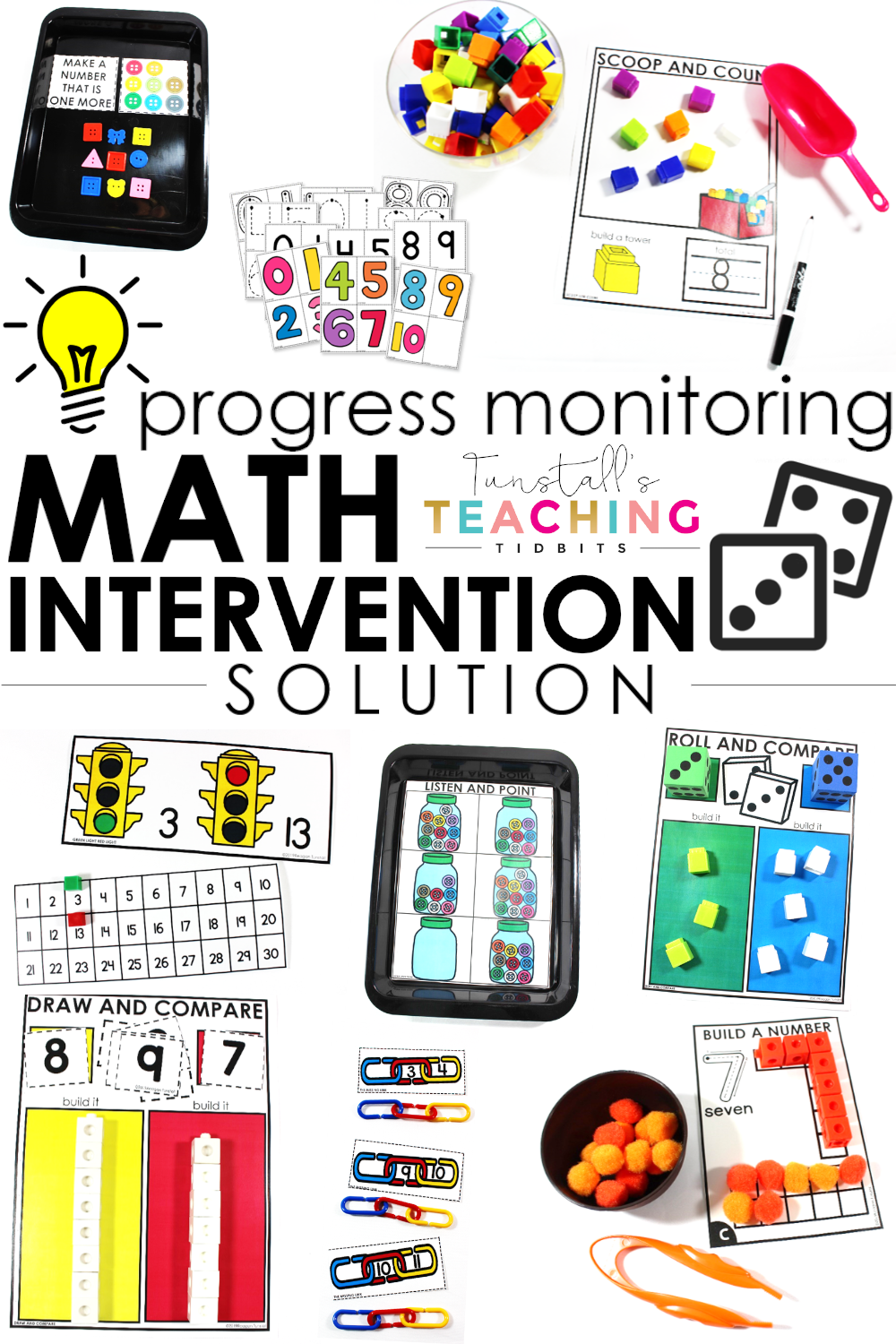
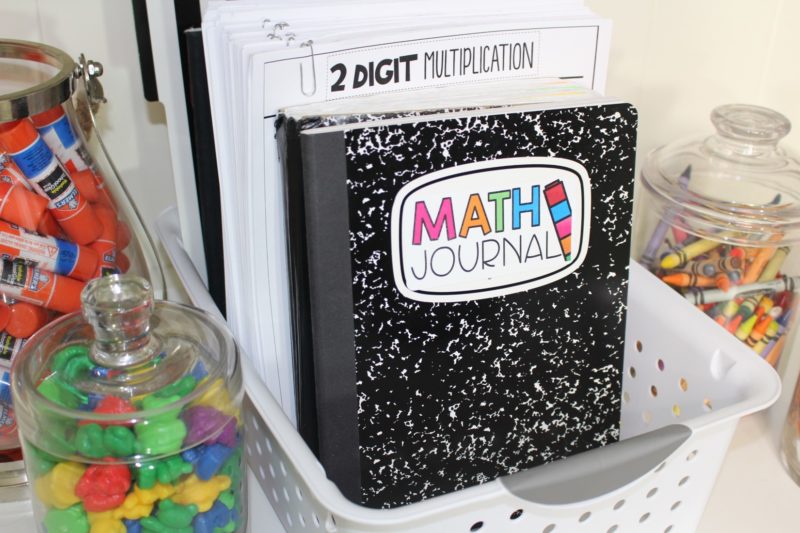


Students should start learning math as early as they could because it is a long-run subject. Which requests students to spend lots of time on it in order to get a significant result. I prefer to let students do more math worksheets and take more math competition to achieve their study goal. Like my son, he is getting used to doing more online math problems via Beestar in his free time.
Hello!
I am always looking on how to improve math center rotations. I have and love using your math center bundle. When you use STACK, how do you make sure there is something for students to do the entire time? Thanks!